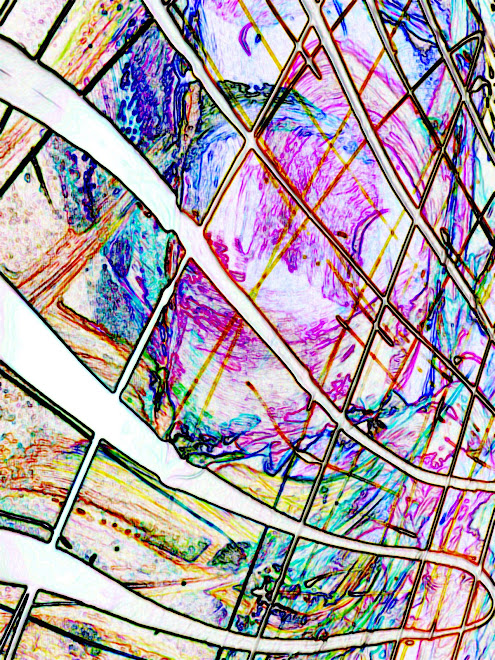Remembering its a lazy Sunday afternoon, the weather today has been wonderful, but its heated this house like a sweat box and I needed SOMETHING to take my mind of it! So before I really get started on this blog I figure it is probably a good idea to revisit some of the ideas already address in our virtual cultures unit. A thankyou in advance to fellow students, my team mates, Emma and Nat and Bre who helped contribute to this post that is essentially an adaptation and expansion on what we have already disclosed on the KCB201 blackboard discussion board.
Lets begin by discussing a buzz word of the twenty-first century: convergence. In short convergence has had (and continues to have) a huge impact on cultures and societies around the world. Henry Jenkins (2006), debatably the key scholar in this area, has outlined three principle ideas relating to the concept of convergence.
1. MEDIA CONVERGENCE
I’m sure to many people in society (like my parents) the introduction of television does not seem like that long ago. These days tv is spread across not only a traditional television set, but also on your mobile, your computer, your pda, and a variety of other formats. This simple example demonstrates how media content is now spread across multiple platforms.
Much media convergence has been driven by consumer demand to have single devices with multiple functions. This is not to say that we will end up with one all-encompassing device that we can do everything from/with, something that Jenkins (2006) heavily emphasises. Jenkins (2006) notes that the increase in multi-platformed fully integrated devices not being the ultimate technological solution is evident in that the majority of consumers who own multi-function products (eg: a mobile phone) don’t actually use all (or even many) of the other capabilities of the technology. I know for me personally my phone is a reasonably up market model, but there are functions on it I don’t think I’ve even heard of! For me my phone is a way to text and call people, and occasionally take photos with, but that is about it. In contrast, my twin brother uses his phone not just in the way I do but also as an mp3 player, access to the internet, an alarm clock, an organisers… just to name a few!
The circulation of media content across these different platforms depends heavily on user-led active participation and engagement with the content and the platforms it is available from. Perhaps this links back to Jenkins (2006) who argues that there are two different forces behind convergence - consumer led convergence (cultural shifts of consumers seeking new information) and technological convergence (where new technologies become intertwined and we are forced to use multi-function singular devices, rather then multiple single function devices).
2. PARTICIPATORY CULTURE
It is now common knowledge that forces like globalisation have caused a significant increase in international networking and cultures are now beginning to overlap and intertwine as we become increasingly involved in the lives of others (on a local, national, and international scale). Technologies like the internet have encouraged behaviours that promote engagement and interaction with media of all forms, as well as people of all kinds. The barriers to communication have been beaten down, opening our ability to access and connect with the world around us and the people in it.
We are encouraged to source our own information and then share it with others. We are able to evaluate this information and twist it to our own purpose. From this process we are creating new information and building an active knowledge base. Because of participatory culture there is a cyclical process of information that is being enrichened and developed as it is constantly evolving. Users are becoming more active and connected with media. Social networking and interactivity is a key to being involved and simply living. Our participation is changing our culture/s, and we are becoming noisy and very public as a result.
3. COLLECTIVE INTELLIGENCE
Flowing on from participatory culture is the notion of collective intelligence. There is widespread sharing and collaboration of information, which then turns into knowledge through sharing this information with others. If we look at it from a very basic mathematical perspective, collective intelligence comes down to if we know "A" and share it with another person who knows "B", we now know "A&B". Collective intelligence would not be viable without convergence and culture is very much centred around this collective and shared body of information and knowledge. Convergence is making culture more intelligent, involved, and intertwined.
So where does technology fit into all of this (other than being a tool from which waves of change like convergence are crafted)? We’ve had it hit home by Axel Bruns in his KCB201 lectures over the past couple of weeks: simply, technology is not just a device, or the functions a device, but it is how we use this device and its functions for our own purpose/s that makes technology significant. By being active and using technology to meet our own means we can extend the original functions of the technology and make it our own. This is not to say that the intangible design/concept/idea/philosophy behind the technology (material/physical object) is not important (of course it is!), but the real importance lies in how technology becomes part of our society/culture. If we consider technologies from this perspective it is easier to consider technologies as cultural technologies that are socially constructed and dependent on the user, instead of the traditional philosophy.
I should probably be referencing all those sentences. OK you want more academia, I’ll give it ago. Flew (2005) explores the fact that culture comprises of several different tiers and his book New Media explores in depth the notion that technology is increasingly becoming more than an impacting component on culture, and it is becoming ingrained as a part of cultural forms and development. Flew (2005) states that on a rudimentary level culture is built from physical objects/tools/artefacts and our tangible presence here on earth. Technology, and new technologies, is/are part of this. On this level content and information is produced and distributed through these mediums. From this dispersion of content culture begins to coalesce and form around recipients of this information. This is becoming what Bruns (2008) would call a palimpsestical process! After the cultural foundations are built (which, for the record, are not necessarily static or stagnant bases) our systems of knowledge and the meaning that is socially construed from the culture/s we are immersed in determine the further development and projection of any given culture. Here we can see how technology moves from being on the outside of cultural foundations to being engrained in every level of cultural development.
With that said, if man maketh the technology can technology maketh the man? I don’t think so! We are not defined by the technologies around us because we have the ability to choose how we use these technologies. Sure we may be limited by the technologies abilities, and our own abilities to know how to use a particular function, but this is where the importance of creativity and innovation comes in. Without creativity and innovation in our culture/s and societies around the world we are lost.
REFERENCES
Bruns, A. 2008. KCB201: Virtual Cultures.
Flew, T. 2005. New Media: An Introduction.
Jenkins, H. 2006. Introduction: “Worship at the Altar of Convergence” in Jenkins, H., Convergence Culture: When New and Old Media Collide,




2 comments:
Well Ella, I think me leaving a comment on your blog after finding it through James's blog should maybe make you feel a little better that your post encouraged some 'extremely technical' social networking skills on my behalf and thus we both fostered said networks and Axel Brun's argument behind his signature idea of 'produsers'.
Although it would seem that KCB201 is suceeding in its effort to encourage us to utilise social networking systems, I will only be using this particular medium for as long as the duration of this assignment and due to the very vague criteria of said assignment have decided that the social networking skills being formed in this subject are forcing us to function as more of an intranet networking form than Axel's more romantic idea of a limitless and worldwide flow of information and networking.
By creating an assignment with criteria that neither defines what we're supposed to do, nor how, for what reason or purpose and on what subject I'm assuming we'll all get 7's as each assignment could really be considered 'correct' depending upon your particular interpretation of the criteria. Like all great works of art, the submissions for this assignment could he hated by some and adored by others but theres no chance that any of us could possibly get less than a 7 if we put in a decent effort as we ourselves would consider it a 'great' assignment and when it comes to highly interpretative pieces if one person loves it then it should be considered a success (or 7 worthy)
In the spirit of not being entirely academic I will just say that, i totally <3'd commander keen.
that weird blobbing little dude filled so many afternoons after school.
i also played alot of doom and wolfenstein.
...sometimes i miss those games on (you were right) it was MSDOS. Also on the note that you said about your parents looking at you have another head, i often try to think about how my life would be if I had grown up in my parents age without the internet or social networking sites like facebook. I use these things to keep in touch with people in canada and england, even brazil. Imagine trying to write an assignment without google. I can't even fathom it, so no wonder our parents have trouble.
Post a Comment